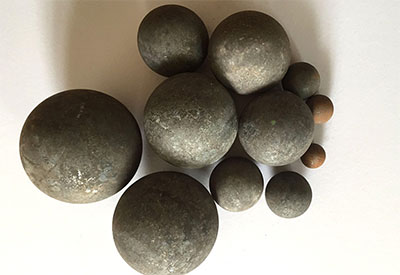Wear-resistant steel balls are divided into two categories
Views: 2017 Update Date:Aug 11 , 2021
Wear-resistant steel balls are divided into two categories: cast steel balls and forged steel balls.
1. Casting steel ball is that steel ball manufacturer uses an intermediate frequency electric furnace to heat up waste materials such as scrap steel and scrap iron to make the charge fully melted. In the process of melting the charge, an appropriate amount of precious metal alloy (such as ferrochrome, ferromanganese, ferrovanadium) is added in the furnace for chemical composition quenching and tempering. After the temperature of the molten iron reaches 1550℃ or higher and meets the requirements of the process regulations, the qualified molten iron is poured into the steel ball mold or the steel ball production line mold. That is, the steel balls produced by casting and smelting are called cast steel balls.
According to the selection of steel ball specifications, the chromium content of forged steel balls is between 0.1% and 0.5% (forged balls generally do not contain chromium), the carbon content is less than 1.0% and the steel balls are manufactured by high temperature forging. Although some forging surface hardness (HRC) of the steel ball can reach ≥56 (the hardenable layer is only about 15mm), the hardness of the core is generally only more than 30 degrees due to the poor hardenability of the forged steel ball (as the diameter of the steel ball increases, the hardenability becomes worse). Under normal circumstances, forged steel balls are often treated with water quenching.
Prev: What is the hardness of the high chromium ball?
Next: The most important grinding media ball - low chromium ball
1. Casting steel ball is that steel ball manufacturer uses an intermediate frequency electric furnace to heat up waste materials such as scrap steel and scrap iron to make the charge fully melted. In the process of melting the charge, an appropriate amount of precious metal alloy (such as ferrochrome, ferromanganese, ferrovanadium) is added in the furnace for chemical composition quenching and tempering. After the temperature of the molten iron reaches 1550℃ or higher and meets the requirements of the process regulations, the qualified molten iron is poured into the steel ball mold or the steel ball production line mold. That is, the steel balls produced by casting and smelting are called cast steel balls.
According to their materials, cast steel balls are classified : cast iron steel balls, high-chromium alloy cast balls, multi-element alloy cast balls, and low-chromium alloy cast balls.
According to the selection of steel ball specifications, the chromium content of forged steel balls is between 0.1% and 0.5% (forged balls generally do not contain chromium), the carbon content is less than 1.0% and the steel balls are manufactured by high temperature forging. Although some forging surface hardness (HRC) of the steel ball can reach ≥56 (the hardenable layer is only about 15mm), the hardness of the core is generally only more than 30 degrees due to the poor hardenability of the forged steel ball (as the diameter of the steel ball increases, the hardenability becomes worse). Under normal circumstances, forged steel balls are often treated with water quenching.






